Choosing the Right Step Down Power Transformer: Factors to Consider
Have you ever wondered why your electronics don’t burst into flames when you plug them in? The answer lies in step-down transformers. But choosing the right one can be tricky. What factors should you consider?
Choosing the right step-down power transformer involves evaluating critical electrical specifications, application-specific requirements, environmental factors, safety standards, efficiency ratings, and long-term considerations. These factors ensure optimal performance, safety, and longevity of the transformer in its intended application.
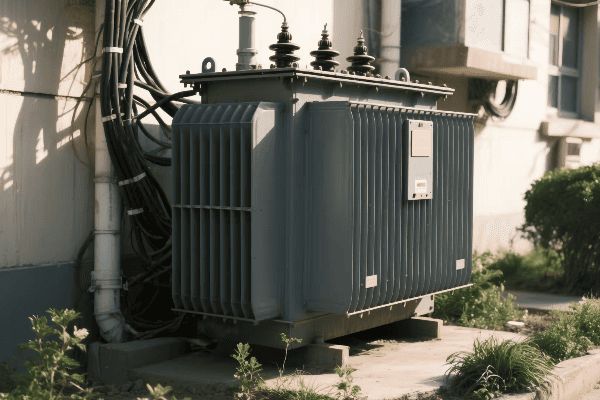
As someone who has spent years working with power transformers, I’ve seen firsthand how crucial it is to select the right step-down transformer. The wrong choice can lead to inefficiency, safety hazards, or even complete system failure. Let’s dive into the key factors you need to consider to make the right choice.
What Are the Critical Electrical Specifications to Evaluate When Selecting a Step-Down Transformer?
Imagine buying shoes without knowing your size. That’s what choosing a transformer without understanding its electrical specifications is like. But what exactly should you look for?
Critical electrical specifications for step-down transformers include primary and secondary voltage ratings, power capacity (VA or kVA rating), frequency, impedance, and efficiency. These parameters determine the transformer’s ability to meet your specific power requirements safely and efficiently.
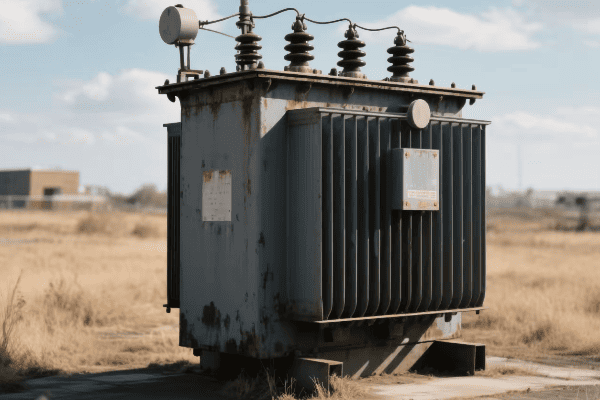
I remember a project where a client chose a transformer based solely on its power rating. They overlooked the impedance, leading to issues with their circuit breaker coordination. Let’s break down these crucial specifications to avoid such mistakes.
Voltage Ratings: The Foundation of Selection
Voltage ratings are the most basic yet critical specifications:
- Primary Voltage: Must match your input power source.
- Secondary Voltage: Should meet the requirements of your load devices.
- Voltage Regulation: Indicates how well the transformer maintains output voltage under load variations.
I once worked on a project where we needed to power 120V equipment from a 480V source. We chose a transformer with a 480V primary and 120V secondary, ensuring a perfect voltage match for both the source and the load.
Power Capacity: Sizing It Right
Power capacity determines how much load the transformer can handle:
- VA (Volt-Ampere) Rating: For single-phase transformers.
- kVA (Kilovolt-Ampere) Rating: For larger three-phase transformers.
- Continuous vs. Peak Load: Consider both your steady-state and maximum power needs.
| Power Rating | Typical Application | Cooling Method |
|---|---|---|
| < 5 kVA | Small appliances, lighting | Air-cooled |
| 5 – 500 kVA | Commercial, small industrial | Oil-filled or dry-type |
| > 500 kVA | Large industrial, utility | Oil-filled with forced cooling |
In a recent industrial project, we initially selected a 75 kVA transformer based on the average load. However, after considering peak demands during motor start-ups, we upgraded to a 100 kVA unit to handle the inrush currents safely.
Frequency: Matching Your Power System
Frequency is often overlooked but crucial:
- 50 Hz vs. 60 Hz: Must match your local power grid.
- Frequency Sensitivity: Some applications require tight frequency control.
- Harmonic Considerations: For loads generating harmonics, consider K-factor rated transformers.
I once consulted on a project where equipment from Europe (50 Hz) was being installed in the US (60 Hz). We had to carefully select transformers that could handle the frequency difference without overheating.
Impedance: Crucial for System Coordination
Impedance affects fault currents and voltage regulation:
- Typical Range: Usually between 2% to 6% for distribution transformers.
- Higher Impedance: Limits fault currents but increases voltage drop.
- Lower Impedance: Improves voltage regulation but allows higher fault currents.
In a data center project, we specifically chose transformers with 5% impedance to coordinate with the upstream circuit breakers, ensuring proper fault protection without nuisance tripping.
Efficiency: Long-term Energy Savings
Efficiency directly impacts operating costs:
- No-Load Losses: Occur constantly, even when the transformer is not powering a load.
- Load Losses: Increase with the amount of power being transformed.
- Efficiency Standards: Look for transformers meeting DOE or other regional efficiency standards.
I recently helped a client upgrade their old transformers to high-efficiency models. The initial cost was higher, but the energy savings paid for the upgrade in less than three years.
Selecting the right step-down transformer requires careful consideration of these electrical specifications. It’s not just about finding a transformer that works; it’s about finding one that works optimally for your specific application. By understanding these critical parameters, you can ensure that your transformer will perform efficiently, safely, and reliably for years to come.
How Does Application-Specific Requirements Influence Step-Down Transformer Selection?
One size fits all? Not when it comes to step-down transformers. Different applications have unique needs. But how do these specific requirements shape your transformer choice?
Application-specific requirements significantly influence step-down transformer selection. Factors like load type, duty cycle, environmental conditions, space constraints, and special features (e.g., taps, shielding) must be considered to ensure the transformer meets the unique demands of its intended use.
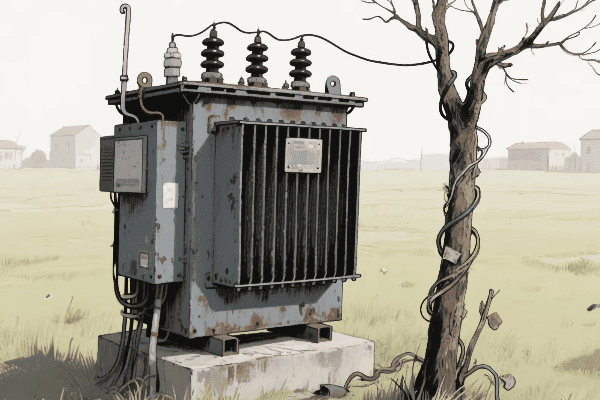
I’ve seen many cases where a perfectly good transformer on paper failed in practice because it wasn’t suited for the specific application. Let’s explore how different applications can dictate your transformer choice.
Load Type: Matching the Transformer to the Task
Different loads have different transformer requirements:
- Resistive Loads: Simplest case, like lighting or heating elements.
- Inductive Loads: Motors and transformers, require consideration of power factor.
- Capacitive Loads: Some electronic equipment, can cause voltage rise.
- Non-Linear Loads: Computers, LED drivers, require special consideration for harmonics.
I once worked on a project for a large printing press. The motors (inductive load) and digital controls (non-linear load) required a carefully selected transformer with a K-factor rating to handle the harmonics generated by the control systems.
Duty Cycle: Continuous vs. Intermittent Operation
The duty cycle of your application is crucial:
- Continuous Duty: Requires a transformer rated for 24/7 operation.
- Intermittent Duty: May allow for a smaller transformer if properly sized.
- Peak Load Handling: Consider short-term overload capabilities.
| Duty Type | Description | Transformer Consideration |
|---|---|---|
| Continuous | 24/7 operation | Full load rating |
| Intermittent | Periodic operation | Possible downsizing with proper analysis |
| Cyclic | Regular load variations | Consider peak and average loads |
In a recent project for a welding shop, we chose a transformer with a higher than necessary continuous rating to handle the intermittent high-current demands of the welding equipment without overheating.
Special Features: Tailoring to Specific Needs
Some applications require transformers with special features:
- Taps: Allow for voltage adjustment to compensate for line voltage variations.
- Electrostatic Shielding: Reduces noise coupling between primary and secondary.
- Multiple Secondaries: Provide different voltage outputs from a single transformer.
I recently designed a system for a sensitive audio equipment manufacturer. We used a transformer with electrostatic shielding to prevent noise from the power line from affecting the audio quality.
Space and Weight Constraints: Fitting In
Physical limitations can dictate transformer selection:
- Indoor vs. Outdoor Installation: Affects enclosure type and cooling method.
- Limited Floor Space: Might require a more compact, higher-efficiency design.
- Weight Limitations: Important for roof-mounted or portable applications.
In a renovation project for an old building with limited space, we opted for a compact cast resin transformer instead of a traditional oil-filled unit. It fit perfectly in the small electrical room while meeting all safety requirements.
Future Expansion: Planning Ahead
Considering future needs can save money and hassle:
- Oversizing: Allows for future load growth.
- Scalability: Consider parallel operation capability for future expansion.
- Flexibility: Taps or multi-voltage primaries can adapt to changing input voltages.
For a growing tech company, we installed a transformer with 30% extra capacity and the ability to parallel another unit. This foresight allowed them to expand their server room two years later without replacing the original transformer.
Specialized Industry Requirements
Some industries have unique transformer needs:
- Medical Equipment: Often requires ultra-low noise and leakage current.
- Marine Applications: Need corrosion resistance and compliance with maritime standards.
- Renewable Energy: Must handle variable inputs from solar or wind sources.
I once worked on a project for a hospital’s MRI suite. We had to use a specially designed transformer with extremely low electromagnetic emissions to prevent interference with the sensitive medical equipment.
Considering application-specific requirements is crucial in selecting the right step-down transformer. It’s not just about meeting basic electrical specifications; it’s about ensuring the transformer is perfectly suited to its intended use. By carefully evaluating these factors, you can select a transformer that not only meets your current needs but also adapts to future changes, ensuring long-term satisfaction and performance.
What Environmental and Physical Factors Are Crucial in Choosing the Right Step-Down Transformer?
Ever tried to use your phone in extreme cold? It doesn’t work well, right? The same goes for transformers. Environmental and physical factors play a huge role in their performance. But what exactly should you look out for?
Crucial environmental and physical factors in choosing step-down transformers include operating temperature range, humidity levels, altitude, exposure to contaminants, seismic considerations, and available space. These factors affect the transformer’s performance, lifespan, and safety in its intended location.
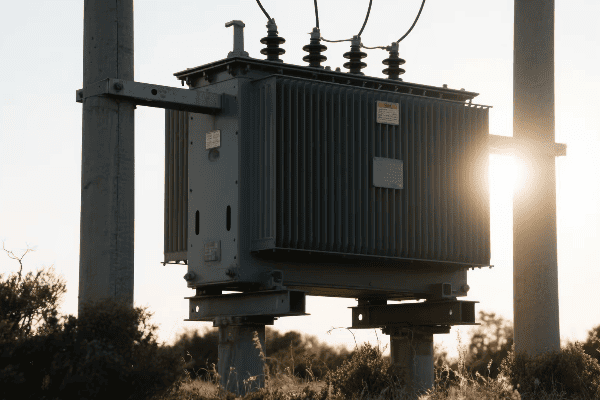
I’ve seen transformers fail prematurely simply because their environment wasn’t properly considered during selection. Let’s dive into these critical factors to ensure your transformer can withstand its surroundings.
Temperature: Keeping Your Cool (or Warmth)
Temperature is perhaps the most critical environmental factor:
- Ambient Temperature Range: Affects the transformer’s ability to dissipate heat.
- Temperature Rise: The increase in transformer temperature under load.
- Insulation Class: Determines the maximum operating temperature.
I once worked on a project in the Middle East where ambient temperatures regularly exceeded 50°C (122°F). We had to use specially designed transformers with high-temperature insulation and enhanced cooling systems to ensure reliable operation.
Humidity and Moisture: Staying Dry
Moisture is the enemy of electrical equipment:
- Humidity Levels: High humidity can lead to condensation inside the transformer.
- Ingress Protection (IP) Rating: Indicates the transformer’s resistance to water and dust.
- Sealed vs. Ventilated Design: Affects the transformer’s ability to handle moist environments.
| Environment | Recommended IP Rating | Example Location |
|---|---|---|
| Indoor, Clean | IP21 | Office Building |
| Indoor, Dusty | IP54 | Factory Floor |
| Outdoor | IP65 or higher | Substation |
For a paper mill with high humidity levels, we chose transformers with a high IP rating and installed dehumidifiers in the electrical rooms to protect against moisture-related issues.
Altitude: Breathing Easy
Altitude affects a transformer’s cooling and insulation performance:
- Derating Factor: Transformers may need derating at high altitudes due to reduced air density.
- Insulation Strength: Air’s insulating properties change with altitude.
- Cooling Efficiency: Reduced at higher altitudes due to thinner air.
I once consulted on a mining project in the Andes at an altitude of 4,000 meters (13,000 feet). We had to specially design transformers with enhanced cooling and insulation to compensate for the thin air.
Contaminants: Fighting the Elements
Environmental contaminants can degrade transformer performance:
- Corrosive Atmospheres: Coastal areas or industrial zones may require special protection.
- Dust and Particulates: Can clog ventilation and reduce cooling efficiency.
- Chemical Exposure: Some environments may require resistant materials or enclosures.
For a chemical plant, we selected transformers with corrosion-resistant enclosures and special paint coatings to withstand the harsh chemical environment.
Seismic Considerations: Staying Grounded
In earthquake-prone areas, seismic factors are crucial:
- Seismic Rating: Ensures the transformer can withstand expected seismic activity.
- Mounting and Installation: May require special considerations to prevent tipping or sliding.
- Flexible Connections: Allow for movement during seismic events.
During a project in California, we had to ensure all transformers met strict seismic requirements. This included special mounting designs and flexible bushing connections to withstand potential earthquakes.
Space and Access: Fitting In and Staying Accessible
Physical constraints can significantly impact transformer selection:
- Available Footprint: May dictate the size and type of transformer.
- Weight Limitations: Important for roof installations or elevated floors.
- Access for Maintenance: Ensure enough space for routine maintenance and potential replacement.
In a recent urban substation upgrade, space was at a premium. We opted for a compact cast resin transformer instead of a traditional oil-filled unit, saving valuable space while meeting all performance requirements.
Noise Considerations: Keeping the Peace
In some environments, transformer noise can be a significant issue:
- Noise Level Ratings: Measured in decibels, important for residential or office settings.
- Sound Enclosures: May be necessary to meet local noise regulations.
- Vibration Isolation: Can help reduce noise transmission to surrounding structures.
For a transformer installation near a residential area, we had to carefully select a low-noise model and install it with vibration isolators to meet strict local noise ordinances.
Considering these environmental and physical factors is crucial in selecting the right step-down transformer. It’s not just about electrical performance; it’s about ensuring the transformer can reliably and safely operate in its specific environment. By carefully evaluating these factors, you can select a transformer that will not only meet your electrical needs but also withstand the challenges posed by its surroundings, ensuring long-term reliability and performance.
How Do Safety Standards and Efficiency Ratings Guide Step-Down Transformer Selection?
Safety first, right? But what about efficiency? In the world of step-down transformers, both are crucial. But how exactly do safety standards and efficiency ratings influence your choice?
Safety standards and efficiency ratings are critical guides in step-down transformer selection. They ensure compliance with regulatory requirements, minimize fire and electrical hazards, and optimize energy consumption. These factors impact not only the initial selection but also long-term operational costs and reliability.
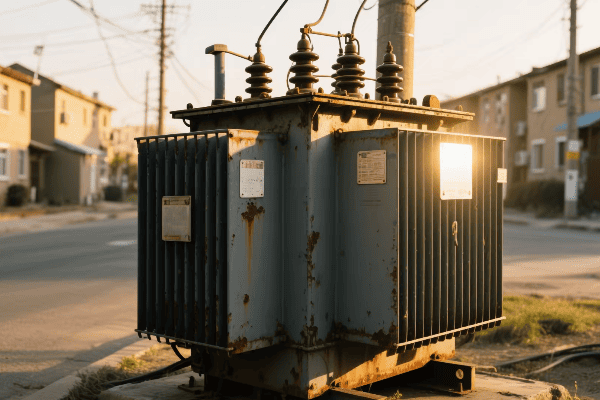
In my years of experience, I’ve seen how adhering to proper safety standards and efficiency ratings can make or break a project. Let’s delve into how these factors should guide your transformer selection.
Safety Standards: Ensuring Peace of Mind
Safety standards are non-negotiable in transformer selection:
- UL Listing: Ensures the transformer meets Underwriters Laboratories safety standards.
- IEEE/ANSI Standards: Provide guidelines for design, testing, and performance.
- NEC Compliance: Ensures adherence to the National Electrical Code for installation and use.
I once worked on a project where the client initially considered using non-UL listed transformers to save costs. We demonstrated how this could lead to insurance issues and potential liability. They quickly opted for fully compliant units.
Efficiency Ratings: Saving Energy and Money
Efficiency ratings have become increasingly important:
- DOE Efficiency Standards: Specify minimum efficiency levels for distribution transformers.
- NEMA Premium Efficiency: Exceeds DOE standards for even greater energy savings.
- Total Cost of Ownership (TCO): Considers both initial cost and lifetime energy consumption.
| Efficiency Level | Energy Savings | Initial Cost | Best For |
|---|---|---|---|
| DOE Standard | Baseline | Lower | Budget-conscious projects |
| NEMA Premium | 30% more than DOE | Higher | Long-term energy savings |
In a recent industrial project, we compared standard and premium efficiency transformers. Although the premium units cost 20% more upfront, they were projected to save over $50,000 in energy costs over 20 years.
Fire Safety Considerations
Fire safety is a critical aspect of transformer safety:
- Less Flammable Insulating Fluids: Options like natural esters reduce fire risk.
- Fire Resistant Enclosures: Important for indoor installations.
- K-Factor Ratings: Indicate a transformer’s ability to handle harmonic loads without overheating.
For a data center project, we selected K-13 rated dry-type transformers with fire-resistant enclosures. This choice provided both the necessary harmonic handling capability and enhanced fire safety, crucial for the sensitive and high-value equipment in the facility.
Electrical Safety Features
Modern transformers come with various safety features:
- Ground Fault Protection: Helps prevent electrical shocks and fires.
- Thermal Protection: Monitors temperature and shuts down the transformer if it overheats.
- Short Circuit Withstand Capability: Ensures the transformer can survive fault conditions.
I recall a project where we retrofitted older transformers with modern protection systems. Within the first year, the new thermal protection prevented a potentially catastrophic failure by shutting down a transformer that was overheating due to a cooling system malfunction.
Environmental Safety
Environmental considerations are becoming increasingly important:
- Oil Containment: For oil-filled transformers to prevent spills.
- PCB-Free Materials: Ensuring no harmful polychlorinated biphenyls are used.
- Noise Pollution: Selecting transformers that meet local noise ordinances.
In an urban substation upgrade, we had to carefully select transformers that not only met efficiency standards but also strict noise limits. We ended up using specially designed low-noise models with additional sound enclosures to meet the city’s requirements.
Efficiency and Load Profile
Understanding your load profile is crucial for selecting an efficient transformer:
- Peak Efficiency Point: Should align with your average load.
- No-Load Losses: Important for transformers that are energized but lightly loaded for long periods.
- Load Losses: Become more significant as the transformer approaches full load.
For a university campus, we analyzed the load profile across different seasons and times of day. This led us to select transformers with peak efficiency points that matched the campus’s average load, resulting in significant energy savings.
Harmonics and Efficiency
Harmonic loads can significantly impact transformer efficiency:
- K-Factor Ratings: Indicate a transformer’s ability to handle harmonic loads.
- Harmonic Mitigating Transformers: Specially designed to reduce harmonic currents.
- Oversizing: Sometimes necessary for loads with high harmonic content.
In a manufacturing facility with lots of variable frequency drives, we used K-13 rated transformers. This choice ensured the transformers could handle the harmonic loads efficiently without overheating or losing significant capacity.
Future-Proofing with Efficiency
Selecting highly efficient transformers can future-proof your installation:
- Exceeding Current Standards: Choosing transformers that surpass current efficiency requirements.
- Scalability: Selecting transformers that maintain high efficiency across a wide load range.
- Smart Grid Compatibility: Opting for transformers ready for integration with smart grid technologies.
For a growing tech company, we selected transformers that not only met but exceeded the highest efficiency standards. This choice allowed for future expansion and integration with their planned smart energy management system.
Balancing safety standards and efficiency ratings is crucial in selecting the right step-down transformer. It’s not just about meeting minimum requirements; it’s about ensuring long-term safety, reliability, and energy efficiency. By carefully considering these factors, you can select a transformer that not only meets current needs but also provides long-term value and peace of mind. Remember, a small investment in higher safety and efficiency standards often pays off many times over in the long run.
What Long-Term Considerations Should Inform Your Step-Down Transformer Choice?
Buying a transformer is like getting married – it’s a long-term commitment. But what factors ensure your choice stands the test of time? How can you avoid buyer’s remorse years down the line?
Long-term considerations for step-down transformer selection include future load growth, maintenance requirements, expected lifespan, adaptability to changing standards, total cost of ownership, and potential for technological advancements. These factors ensure the transformer remains suitable, efficient, and cost-effective throughout its operational life.
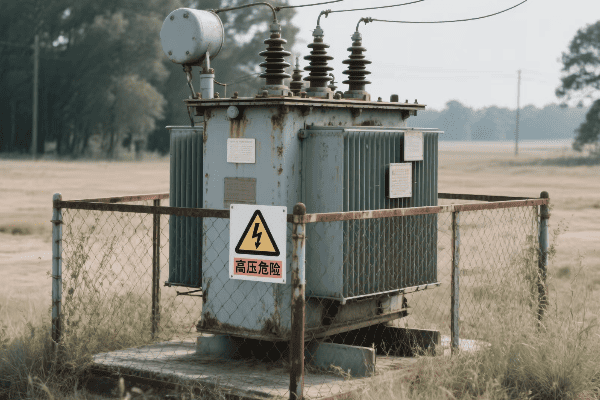
In my career, I’ve seen many organizations regret not thinking long-term when selecting transformers. Let’s explore the key considerations that can save you headaches (and money) in the future.
Future Load Growth: Planning for Expansion
Anticipating future needs is crucial:
- Oversizing: Selecting a transformer with capacity for future growth.
- Parallel Operation Capability: Allowing for easy expansion by adding transformers.
- Flexible Voltage Taps: Accommodating potential changes in supply voltage.
I once worked with a rapidly growing tech startup. We chose a transformer with 30% extra capacity and the ability to parallel another unit. This foresight allowed them to expand their server room two years later without replacing the original transformer.
Maintenance Requirements: Keeping It Running Smoothly
Consider long-term maintenance needs:
- Oil-Filled vs. Dry-Type: Different maintenance schedules and requirements.
- Accessibility: Ensure easy access for routine maintenance and potential repairs.
- Monitoring Systems: Built-in diagnostics can predict and prevent failures.
| Transformer Type | Maintenance Frequency | Typical Maintenance Tasks |
|---|---|---|
| Oil-Filled | Annually | Oil testing, leak checks |
| Dry-Type | Every 3-5 years | Cleaning, connection checks |
| Smart Transformer | Continuous monitoring | Predictive maintenance |
For a remote mining operation, we selected transformers with advanced monitoring systems. This choice allowed for predictive maintenance, reducing the need for frequent on-site inspections in a challenging location.
Expected Lifespan: The Long Haul
Consider the expected operational life of the transformer:
- Quality of Materials: Higher quality often means longer life.
- Environmental Factors: Harsh conditions can shorten lifespan.
- Loading Profile: Consistent overloading can reduce life expectancy.
In a critical infrastructure project, we opted for premium-grade transformers with a 40-year design life. The higher initial cost was justified by the reduced risk of failure and lower replacement frequency in this vital application.
Adaptability to Changing Standards
Standards and regulations evolve over time:
- Efficiency Standards: Choosing transformers that exceed current standards.
- Environmental Regulations: Considering future restrictions on materials or emissions.
- Smart Grid Compatibility: Selecting transformers ready for future grid technologies.
For a utility company, we selected transformers with advanced monitoring capabilities and the ability to integrate with smart grid systems. This choice positioned them well for the ongoing grid modernization efforts.
Total Cost of Ownership (TCO)
Look beyond the initial purchase price:
- Energy Costs: Higher efficiency can lead to significant long-term savings.
- Maintenance Costs: Consider the ongoing expenses for upkeep.
- Reliability: Factor in the cost of potential downtime and repairs.
I once helped a client compare two transformer options – one with a lower upfront cost and another with higher efficiency. Our TCO analysis showed that the more efficient model would save over $100,000 in energy costs over 20 years, more than justifying its higher initial price.
Technological Advancements
Stay open to emerging technologies:
- Solid-State Transformers: Potential for improved efficiency and control.
- Advanced Materials: New core materials may offer better performance.
- Digital Integration: Transformers with advanced monitoring and control capabilities.
While working on a smart city project, we specified transformers with advanced digital interfaces. This choice allowed for easy integration with the city’s developing IoT infrastructure, providing real-time data on power quality and usage.
Environmental Impact
Consider long-term environmental factors:
- Eco-Friendly Materials: Biodegradable oils, recyclable components.
- Energy Efficiency: Lower losses mean reduced carbon footprint.
- End-of-Life Considerations: Plan for eventual recycling or disposal.
For an environmentally conscious client, we selected transformers using natural ester fluids instead of mineral oil. This choice not only reduced fire risk but also ensured easier and more environmentally friendly disposal at end-of-life.
Vendor Support and Warranty
Think about long-term support:
- Warranty Terms: Look for comprehensive, long-term coverage.
- Vendor Stability: Choose manufacturers likely to be around for support in the future.
- Spare Parts Availability: Ensure critical components will be available for years to come.
In a critical infrastructure project, we selected a transformer from a well-established manufacturer offering a 10-year warranty and guaranteed spare parts availability for 25 years. This choice provided peace of mind for long-term support and maintenance.
Considering these long-term factors is crucial in selecting the right step-down transformer. It’s not just about meeting today’s needs; it’s about ensuring your choice remains suitable, efficient, and cost-effective for decades to come. By carefully evaluating these long-term considerations, you can make a transformer selection that provides lasting value and adapts to future challenges and opportunities.
Conclusion
Selecting the right step-down transformer requires careful consideration of electrical specifications, application needs, environmental factors, safety standards, efficiency ratings, and long-term considerations. This comprehensive approach ensures optimal performance, safety, and value throughout the transformer’s operational life.
Free CHBEB Transformer Catalog Download
Get the full range of CHBEB transformers in one catalog.
Includes oil-immersed, dry-type, pad-mounted, and custom solutions.
Quick Message
Request A free quote
We'd like to work with you
- +86 15558785111
- [email protected]
- +86 15558785111
What We Do
CHINA BEI ER BIAN (CHBEB) GROUP, with 218 million in registered capital, originated from Beijing Beierbian Transformer Group. Headquartered in Beijing for R&D, it operates major production bases in Nanjing and Yueqing, producing high-quality products.
Latest Product
address
BeiJing
No 3,RongJing East Road,BeiJing Economic Technological Development Area,BeiJing,China
JiangSu
No 7️Xiangfeng Road,Jiangning,NanJing,JiangSu,China
WenZhou
No.211, Wei 16 Road, Industrial Zone, Yueqing, Wenzhou, Zhejiang, China.
XiangYang Industrial Zone ,YueQing,WenZhou,ZheJiang,China
contact us
- [email protected]
- +86 13057780111
- +86 13057780111
- +86 15558785111
Copyright © Bei Er Bian Group


